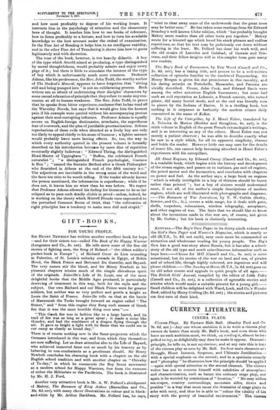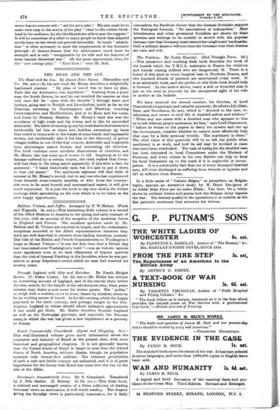CURRENT LITERATURE.
CINEMA PLAYS.
Cinema Plays. By Eustace Hide Ball. (Stanley Paul and Co. Is. 6d. net.)—Any one whose ambition it is to write a cinema play cannot do better titan study Mr. Ball's book, and even those who have no such ambition must, we think, on reading it, almost be im. pelted to try, so delightfully easy does he make it appear. Dramati principle, he tells us, is not mysterious, and at any rate this is try of the cinema play as soon by Mr. Ball. Its four main elements art Struggle, Heart Interest, Suspense, and Ultimate Jwstificalion- with a special emphasis on the second ; and in a specimen comedy and " photoplay " he illustrates how the principle should be applie I —again with special attention to the second element. The cinema writer has not to concern himself with subtleties of atmosphere and characterization, such as haunt the ordinary stage play, nor again is he worried by restrictions of " location." " He may utilize sea-scapes, country surroundings, mountain sides, rivers. and prairies " in a way that must cause the dramatist of stage plas-s to ache with envy, and thus he is able to " colour the vitality of his story with the poetry of beautiful environment." Tha cinema
writer has no concern wig " art for art's sake.' His aim must be to make each step in the action of his play " clear to the veriest block- head in the audience, for the blockheads are able to pay the coppers." It will be somewhat of a relief to many people to know that adapted novels have on the whole not proved successful. So much " adapta- tion " is often necessary to meet the requirements of the dramatic principle of cinema-drama that the unfortunate novel loses its strength and is only " recognizable by its title and the features of some famous -theatrical star." All the more opportunity, then, for the " new vintage play." " Ecce Mar ! " cries Mr. Ball.















































 Previous page
Previous page